We celebrate the end of the year the only way we know how: through lists, essays, and mixes. Join us as we explore the music that helped define the year. More from this series
“I hear a new world/ Calling me/ So strange and so real/ Haunting me”
– Joe Meek, “I Hear a New World”
In our early years, much of TMT’s identity was formed through our unabashed championing of so-called “noise music.” But noise in this age of hyper-mediation and decentralized networking is not simply a marketing keyword for a strand of music that had actually existed in various permutations for decades. These days, what we often describe as noise is a sweeping, persistent phenomenon, a swallowing constant that’s difficult to describe succinctly but always felt comprehensively. Within this noise, we are required to fashion performances that are oftentimes only legitimized through naive political framing, and we come out with wild distortions of culture and warped views about our roles within it: fetishized surprise releases, dance memes literally created by companies, co-opted event albums — instantaneous value creation.
This year, we won’t be shaping our list of favorites into a narrative. Any narrative is always already corrupted (not a bad thing). Instead, at the end of 2016, in a moment when we sometimes prioritize who we are over what we do, when we forget that the political process has never been civil, when we’ve become so desensitized to ongoing institutionalized, structural murder, we could probably use some self-reflection, a humble reminder of what it means to be social animals who happen to love making noise, musical or not. Because sometimes what constitutes the sounds of the year have nothing to do with our favorite music. Sometimes the sounds arrive as an “incongruously cheerful” symphony of muffled ringtones soundtracking tragedy. Sometimes they’re the creepy harmonies of algorithms, robots, and AI technology (which can now also write novels, create movies, kill people, oversee political campaigns, and become “Hitler-loving sex robots”). Sometimes it’s the noise from social media — whether it’s about protecting water, something about pizza, or the brave documentation of an unjustified death — or simply the noise as heard through our own curiosity, persistence, innovation, and risk-taking.
But whatever was upsetting about the noise in 2016 can still be reframed, however cautiously. As ideologies were set ablaze in both literal and metaphorical ways, we were reminded that this earth is populated first and foremost by people — human bodies — not ideas. 2016 was terrifying and weird and utterly exhausting, all of us partially brought to heel by mediums through which some of us might’ve hoped would “save us,” a reckoning that at its least harmful bruised only egos as we simultaneously retreated in disgust and worked toward something resembling a post-truth unification. It was our 2016, the horror a little closer to home this time, but in my opinion as dreadful and as inspiring as any other year. So strange, so real: whatever 2016 might’ve signified politically or aesthetically could maybe, possibly be the initial rumblings of a new world, a bubbling fulfillment of a promise that we never realized we were being ushered toward all along.
50
N-Prolenta
A Love Story 4 @deezius, neo, chuk, e, milkleaves, angel, ISIS, + every1else…. and most of all MY DAMN SELF
[PTP]
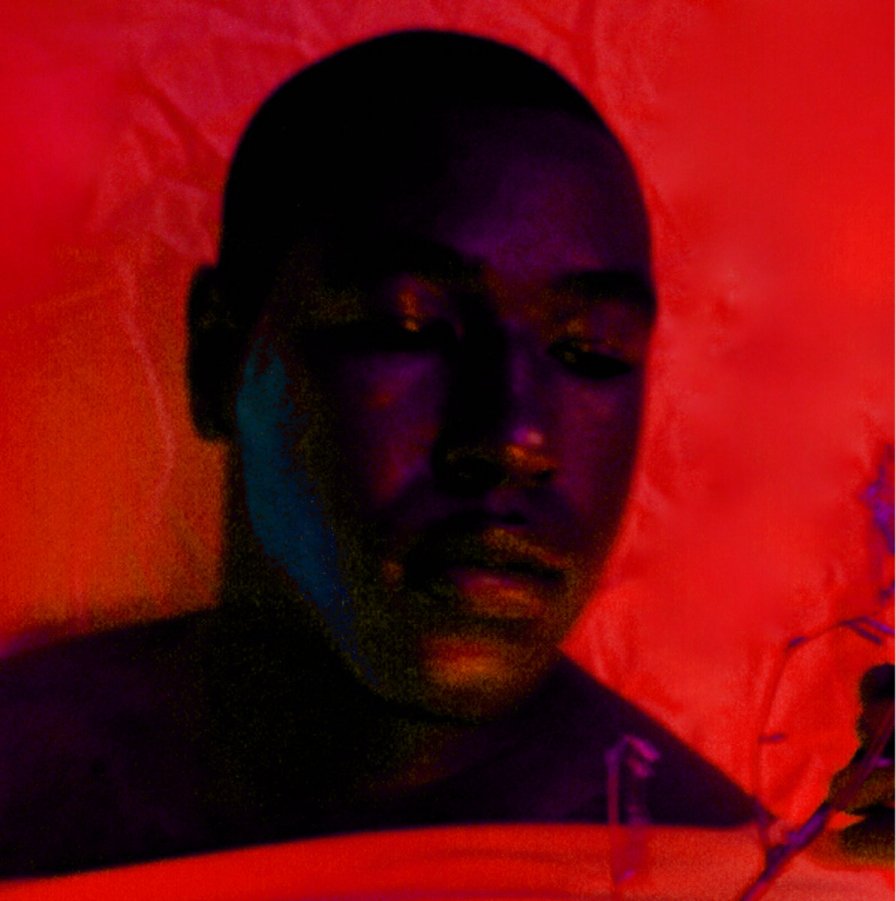
Stretching the boundaries of ballad work and symphonic noise, N-Prolenta’s A Love Story… headlined a stacked year for PTP (f.k.a. Purple Tape Pedigree) with an angelic, heart-direct study in iconography and neoliberalism (re: Rafael Lubner). Political and biotechnics aside, A Love Story felt at home in 2016, simply bedroom-eyed at face value, with serpentwithfeet, Chino Amobi, and Dedekind Cut all sharing a power-questioning, noise-and-drone-centric pop spirituality. The spacious, occasional heavenly movements from N-Prolenta differed from the accompanying 2016 works (Driks Ultra Three and Dviance collaboration STRIATED INATTENTION AND A CRIPPLED BLISSING), but stacking up action and horror flicks too high gets dangerous. That’s why there was romance — A Love Story.
49
Sean McCann
Music for Public Ensemble
[Recital]

What is my shell? It’s meant as a defense, but also as a home. A place I can retreat into when I feel overwhelmed, bombarded, or just tired. Crucially, it isn’t all of me, only what I show. It’s what people see when they notice me. What composes it? It’s composed of thousands of smaller shells, and it can change shape and size and color as I wish. As I grow, as I move, I gather new shells, and I shed old ones so that others can find solace in them. How are your tendons? Mine hurt sometimes, especially on long days of searching. For me, finding release is a solitary exercise, but finding total solitude can be its own exhausting feat sometimes. What do you carry outside your tongue? Despite my inwardness, my breath lives outside of my shell. It’s recyclable, its existence no longer bound once it leaves my shell. It’s part of a chorus that is always performing. I am part of a chorus that is always performing: A Music For Public Ensemble. A boy birthed on a beach spends his lifetime walking, collecting shells, tossing away shells, inhaling, exhaling, performing. Each morning, when he cracks open his eyelids, brushing away secretions of sand and pearls, his composition is different. And has his character changed?
48
Ka
Honor Killed the Samurai
[Self-Released]

I’ve been a smoker for 10 years. Doctors always tell me to cut back. Then, with a smile and a wink, they tell me that I should actually quit. This example extends past itself. The US = profits over logic. Why cure and guide when you can jest and make money off an ailment? Professionals who gain off our pain and addictions, our desires and wants, who should never gain off of our missteps, also gain against their duty with winks and smirks. Ka, in 2016, was the antithesis of this. He spoke economically of illegal economics, of instances painted in truth and knotted morals, but without that aged cuteness. Poetically wrapped in parcels snug and fitting, his words seemed to follow one another like stones on a path. To be unpacked? Yes. But no grab-ass riddle shit here. Nuggets to digest; spittle caked on the corners of our mouths to be wiped away, not secretly mocked around a corner with a knowing authority. And with Honor Killed The Samurai, there was no hint of a wink or a smirk. What was said was said. And what was said was to be listened to. Not just heard, but listened to. Deft formation of symbols and syllables. A humble telling of experience over embellishment. As always, the jester juggled and the crowd applauded, while the poet spoke off in a corner to a few turned ears.
47
Amnesia Scanner
AS [EP]
[Young Turks]

It’s all reductio ad absurdum now. Cascading not to the bottom, but to nowhere at all. The kickback into ones and zeroes; all your data are belong to them. Amnesia Scanner’s garden, “a walled space with vegetation,” bore corrupted fruit this year with AS. These compositions seemed too technologically loaded to be codified within 12 inches of plastic, were they not so visceral and club-ready. The initial effect was akin to PaulStreching the granularities of a data dump or mapping the spectrogram result of a Hieronymus Bosch hellscape (Boaistuau’s “The Monster of Cracow” was an actual touchstone here): nonetheless, the sounds that could be made by Amnesia Scanner ricocheted throughout our im/permanent bodies, unsettling and liberating sensibilities of the dance-/home-listening divide — in a way, their place in Young Turks’s roster didn’t seem so iconoclastic after all. Histories and traditions colluded into pure aesthetic, characterized by a juddering A/V clusterfuck of a website. If hearing AS meant sublimating oneself to an alien unreality, the long-lasting palpitations it provoked were physical and entirely real.
46
Angel Olsen
MY WOMAN
[Jagjaguwar]

When I first started listening to MY WOMAN, I was worried. The downtempo synth-pop of opening track “Intern” sent the same shudders down my spine that Iron & Wine’s awful Kiss Each Other Clean did, an album that saw a formerly cathartic indie-folk musician blatantly appealing to greater numbers. Blessedly, my opinion about MY WOMAN changed as quickly as Angel Olsen’s third album progressed. As it turns out, “Intern” is an anomaly in the tracklist, setting the scene for her most diverse, dynamic, and complete album yet. All of Olsen’s soul-wrenching, poetically introspective songwriting was here, only more evolved, imbued in gracefully grander pop-oriented forms that nevertheless sounded natural in her expanding aesthetic. The explorative country-tinged ballad “Sister” and the Mellotron prog of “Woman,” the latter of which sounds like a spiritual counterpoint to the Timber Timbre track of the same name, are two of the longest (and deepest) tracks she’s ever written, but indie-rock bombers like “Shut Up Kiss Me” and “Give It Up” still came in as tight and as focused as anything by Sharon Van Etten. On MY WOMAN, Olsen took a firmer grasp on the reigns of writing and producing her music. She knew what she wanted, and she got it. This is how you open up without giving it all away.
45
Oren Ambarchi
Hubris
[Editions Mego]
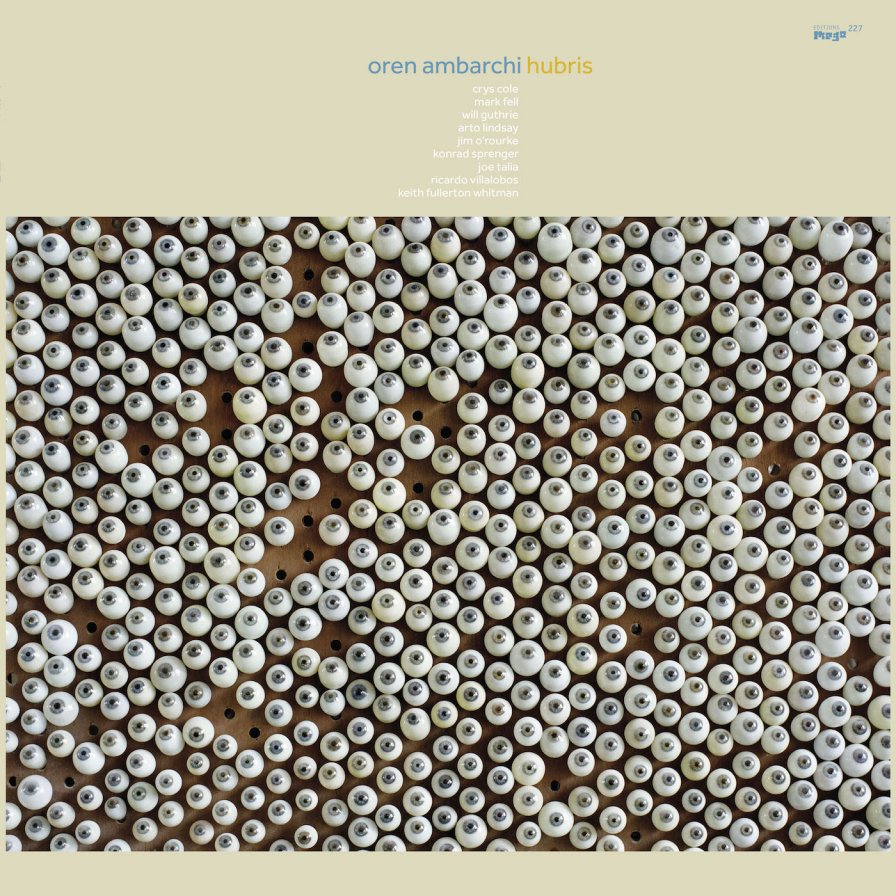
It’s hard to imagine why Oren Ambarchi would name a work as infallible as his latest after hubris, a characteristic that reliably foretells of a hero’s downfall through their own overconfidence. It is especially surprising considering that Hubris came off as fairly egoless: Ambarchi sat as director, rarely the spotlit actor or protagonist. Stiff throbbing rhythms brought a trance, and fluid textures filled the spaces; very little self was present. When the album’s cover art was revealed, the list of names donned on it was enough to excite geeks who’ve scrolled through The Wire or TMT once or twice. Although typically individualistic well-known personnel, in this mix, these musical auteurs lost their definition; they became organs in a larger body. And while there’s certainly a performance of egoism by any singular artist who stakes their claim over work that took so many others to make — Elysia Crampton’s Elysia Crampton Presents: Demon City and Sean McCann’s Music for Public Ensemble parallel this — we could also find a humbling image in the inhabitance of that singular artist’s name by the whole ensemble, as though Ambarchi himself was composed of component parts — O’Rourke, Cole, Fell, Villalobos, etc. — and was incomplete without them. Thus, Ambarchi & Co. performed their unyielding drive through the album’s three movements until there was no option but to suddenly stop.
44
Huerco S.
For Those Of You Who Have Never (And Also Those Who Have)
[Proibito]

In a year when one’s long-abandoned paranoia could feel like a comfy, nicely worn-in shoe, For Those of You was a fine totem to the overcast municipal nature walk. These trails of varying levels of upkeep, where one crosses highways, dump sites, strip malls, and railroad tracks. The album was a clammy headspace for slow, deliberate delineation as we walked. Not just delineation of thought, but of when our preoccupations become unaccountably pointless. Like when we watched a long, slow freight as it passed. A cold comfort that brought a breeze with it. We watched that train, and the passing of time was only down to when it did. When some part of us thought the procession was ending, it didn’t. And cars of increasingly inscrutable dimensions rumbled through until the train became a chain of oblong matter bouncing and careening on undulating cables. Once finally passed, its absence left us with blurred vision and a numb sort of contentment. Far reaches never felt so close, and if they had, Brian Leeds provided us with a gossamer reminder.
43
Mitski
Puberty 2
[Dead Oceans]
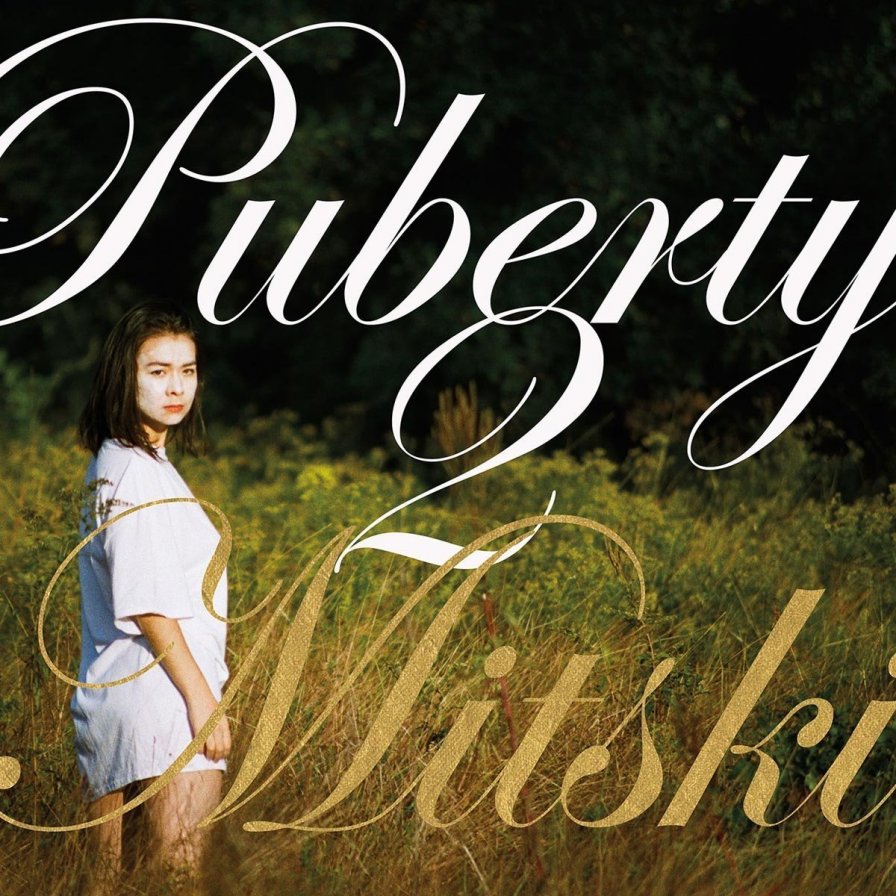
Too many things made Puberty 2 essential: the subversion — sometimes subtle, sometimes overt — of expectations, the intrigue, the control, the sense of humor, the perspicuous and witty portrayal of people, situations, and their frequently pathological interactions. Melancholy as it sometimes was, it wasn’t an unthinking howl, but a perfectly crafted play of persona, personality, and undervalued perspectives, forged from experience — not just the expression of greater, deeper forces, but as something created, carefully conceived. And that was crucial. We still don’t know if we’re more like holes or folds in this moth-eaten world, and the many ways we can be done unto and undone by others are not remotely evenly distributed, to our continuing disgrace. Too many of us, myself included, have to be reminded often about this. But of itself, that was only part of the reason we liked Puberty 2 so much: it was music, not an essay, not a memoir — with all the old-fashioned good stuff too: singing, playing the goddamn guitar, writing songs — clever, catchy songs embellished with neat, modern arrangements. And all the elements were absolutely essential — Mitski as a symbol, Mitski as a musician, Mitski as a human being.
42
DJ Coquelin & MC Cloarec
JE M’EN TAPE
[PRR! PRR!]
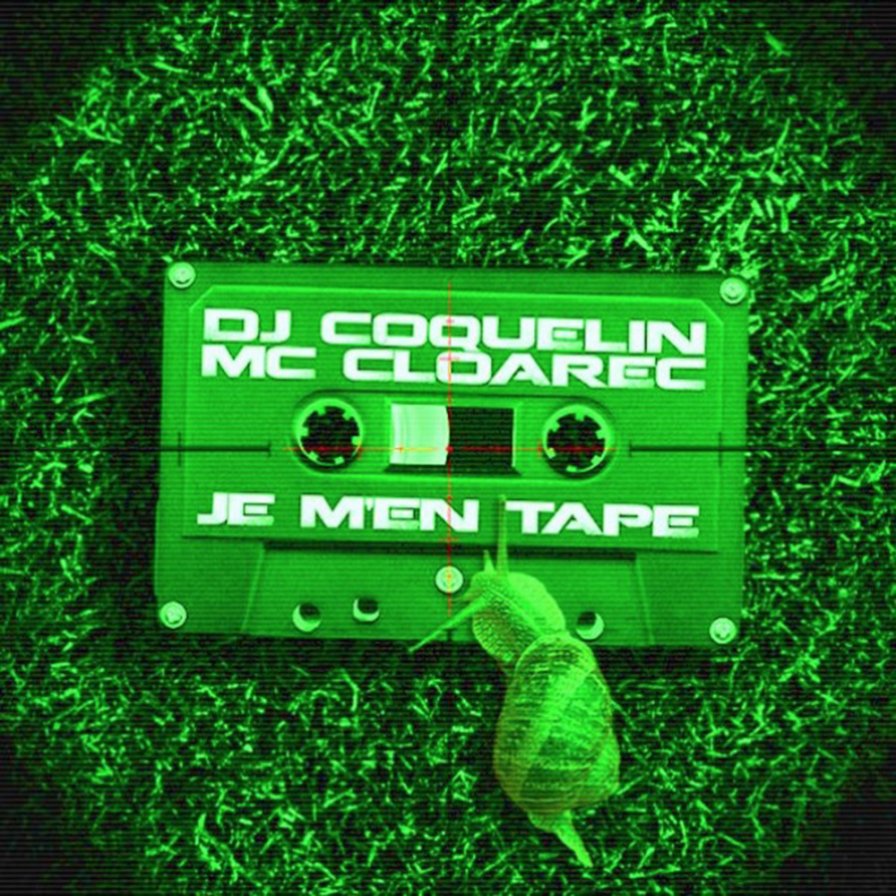
Captagon was the Belgian gabber scene’s drug of choice. No wonder: amphetamines were a minimum requirement to keep up with that sort of rhythm. Then again, the pill was also used to treat children with attention disorders; it was bound to have unexpected side effects sooner or later. A couple of decades past the gabber heyday, DJ Coquelin and MC Cloarec popped a couple of tabs, laid a scattershot but unmistakably demented beat, and started flipping the dial. JE M’EN TAPE was the aural register of such a journey, much more than the sound of an evening spent shaking your head out of its socket. The rush of clarity that the psychostimulant provided them blasted the duo through makina snippets, chopped-n-screwed Zeuhl, German hip-hop sketches, EBM relics, Italian tecnopop, and acid mixes of American pop hits, mapping the outskirts of the European electronic scene that trendy mags usually overlook. The stuff you’d find in gas station discount bins near the once-porous borders that birthed legends like the Gypsy Kings, DJ Bobo, Baccara, Gigi D’Agostino, Laid Back, or Mano Negra. An autoethnography of the willfully trashy, uncool, and… fun in the shape of a cassette.
41
ANOHNI
HOPELESSNESS
[Secretly Canadian/Rough Trade]
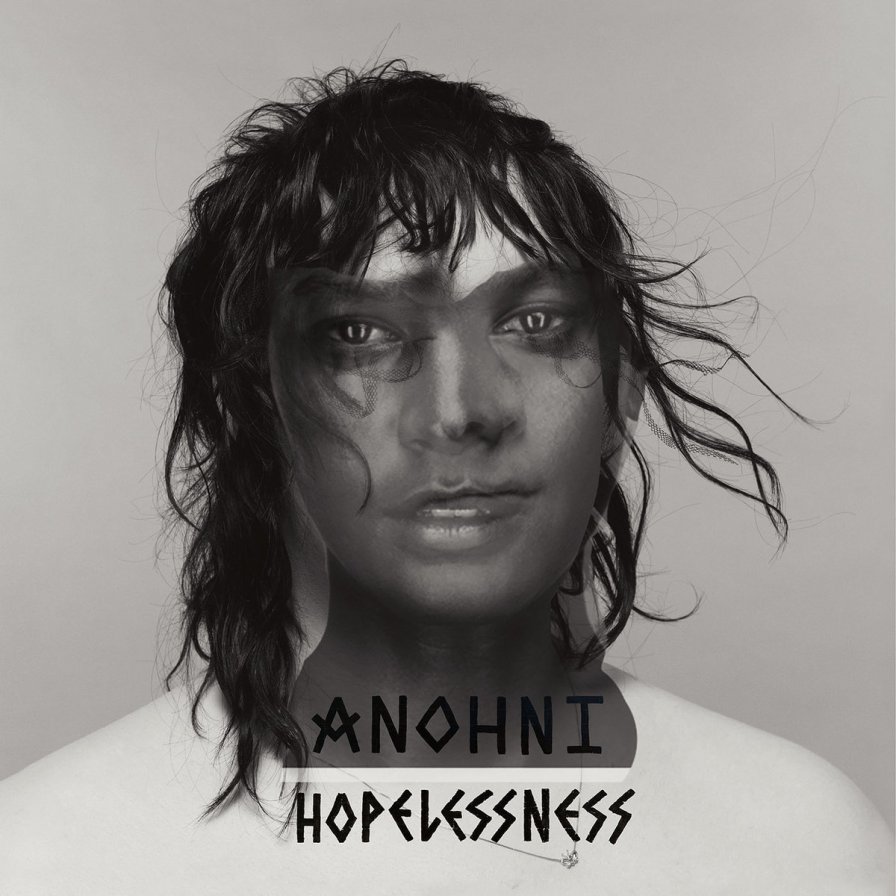
How many times did I turn to HOPELESSNESS in the midst of tragedy in 2016? Trump, police brutality, shootings, Syria, Brexit, DAPL — it just never stopped. I sought respite in this album, a record that departed from hope with due abandon. Of 2016’s condition of despondency, Antony Hegarty (a.k.a. ANOHNI) asked The Guardian: “Can we address it? Can we inhale it? Can we withstand it?” These questions saturated HOPELESSNESS. Sonically, the album was a masterpiece: beautifully triumphant harmonies, Hegarty’s sorrowful vibrato, glowing synths, all delivered with awe-inspiring clarity.
Virulent guilt was a salient theme throughout (“How did I become a virus?”); so too was confronting the “chasm of denial” that so often stands in the way of change. Meditations on voyeurism, the failings of Obama, Stockholm-syndrome pleas for torture, violence, and more snuck into the ear with graceful amity. Still, within the record’s dejection, there was a sense of vulnerability; with tempestuous affect, Hegarty achieved an album that was at once morose, refined, and passionate. I can’t help but point the reader to Ben Levinson’s year-end essay “The Strength of Vulnerability,” a beautiful piece about choosing radical softness in the wake of hopelessness. I feel like that was exactly what HOPELESSNESS was: a wonderful record that embraced intimacy and introspection in the face of uncertainty.
40
Klein
ONLY
[Self-Released/Howling Owl]

Klein’s debut album ONLY was composed of 12 separate songs, but it flowed like a hushed litany of disembodied, psychedelic interludes. Moving hypnotically through taut, clattering R&B trashjams, janky rap-inspired beats, and brittle processions of ambient rumblings & speed-fucked tape-mangling, the London-born, Nigerian-English artist sought to give a little shape to the ethereal while teasing apart the material, all with a calm, fragile touch. A mark of hatred, a mark of worship: this here was divinity blemished with spit and grit, the sacred obfuscated, Drake in a wheelchair. Nearly every time the music would start blossoming into song, rot and decay quickly set in, delay and echo and pitch-shift effects devouring everything. Out of tune. Out of world. Out of time. ONLY felt too unwieldy, too bizarre, too detached to actually contribute to a devotional anything, but this was actually a baptism, a rebirth for someone we’re only just getting to know. Fucking gorgeous, this was.
39
Julianna Barwick
Will
[Dead Oceans]

The running theme of 2016 has been loss: whether it be of freedom, life, or will. Yet Julianna Barwick’s Will is being found, one return listen to another, in a world I dare see reflecting the cold and gray of the season now stretched throughout a year. The heartfelt echoes and blood pulses of Will showed me that there were many among us still hoping to live, striving to make it through the winter of our discontent. When it was released in May, Will made it feel like spring would last forever. Now all that’s left is Barwick’s warm, airy vocals and vibrant synth diligently working to thaw the chill. We have become entombed in a slumber of sloth, anger, and despair. We all lost something in 2016, and as we trudge through an uphill climb, barefoot and raw from the blasting snow, we have the rallying cry. A reminder that progress is always impeded. It took Barwick three albums to get to her creative apex, and I see her looking upon us now, ready to reach down her willful hand and pick us up before we fall into the deepest trenches at her feet.
38
Ytamo
MI WO
[Someone Good]

Ytamo doesn’t need much to make it swing. A little blip does the trick. What flew by? MI WO. A cute twitch. There it goes! Neat. Turns out, it’s more practiced than you thought, because then you see it again. MI WO darts and diverts. Lands with the grace of a bird or a ballerina. Look at it spin and bounce above! MI WO. What finesse, what articulation. MI WO swings and connects. Things take root and grow deep. The composition is unfolding, the puzzle gets complex. Everything’s filling in. MI WO is alive with little details. Good linework, a steady hand, and just enough shading. Pianos and bongos and little trumpets and trinkets and little loves and ideas in the voice all can coexist if they wait their turn. Everything was a mess back then, but then the pieces fell into place. They work the momentum up. Tensions are flooding out in little ocean waves. There’s immense strength here. You sense careful and concealed muscles equally distributing the weight. Remember at the start when you didn’t know what this would be? Now you’re like, “It’s cute, but it’s kicking my ass.”
37
The Savage Young Taterbug
Shadow of Marlboro Man
[Night-People]

Somehow, these songs were hardly here. They were hunched when I found them, and they disintegrated as they met my ears. I hummed “Taxi Fantasma” as I walked the hot walk home. “Scotts Gravy” looped inside me as the horizon marbled before my very eyes. One last block till it was cool and nothing was muffled. I rounded that final corner, and my heart was gone; he was standing there, sun behind him with a shadow 13 feet long. It was the Marlboro Man. The Savage Young Taterbug tried to warn me, but his tape-cracked meanderings hissed off me like steam in sunlight. The songs felt like they came from somewhere perpetual and timeless, but they were funneled and fragmented by the act of being carried into the present, country songs sloshed in a bucket. What was there left for me to do but stare down the Marlboro Man and accept my fate? I took one more step and he was upon me.
36
Future
EVOL
[Epic]
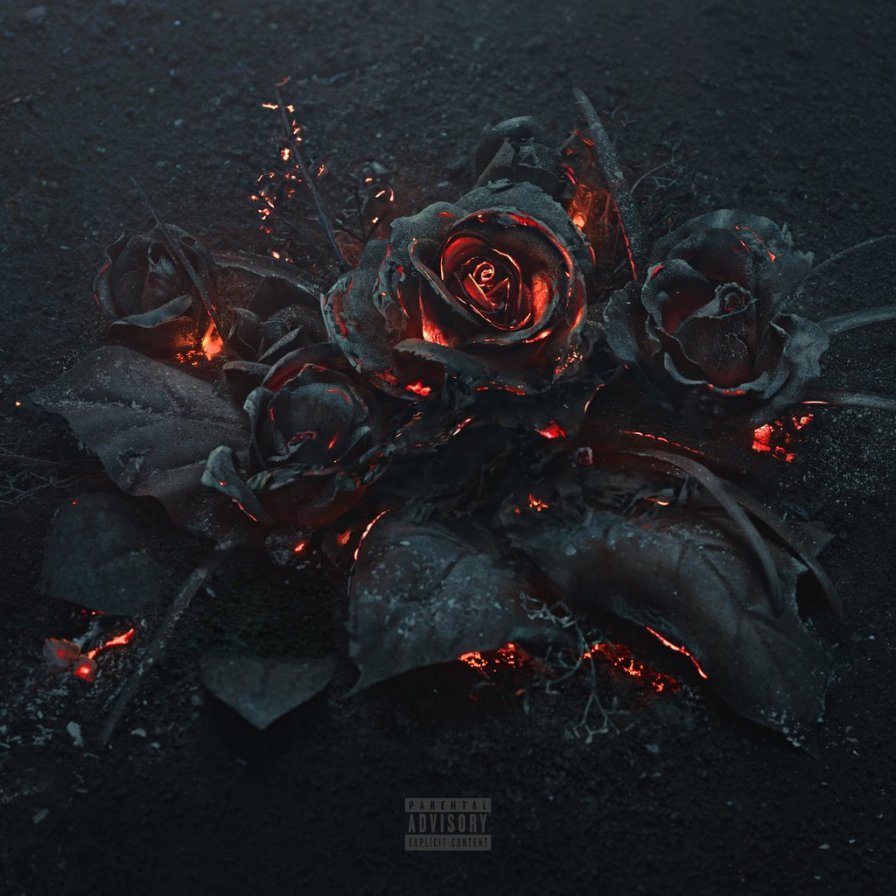
Forming a central conceit so brazenly predicated on the rejection of fellowship, EVOL spoke to the hardness of our hearts. It presented a paracosm of anomie, a nightmare world painted by only the rawest of feeling, by abuse and coercion, by an obscene sensuality — codeine-laced fluids asplash, bodily or otherwise. Appealing to popular pretense, it was yet uniquely imbued with a heretofore foreign dissonance, one that expanded the vocal limits of Future’s baritone, transforming it beyond the realm of mere autotune. In this way, EVOL was both pretending and alienating. It proffered no sound and all fury; it could be Grand Theft Auto: Atlanta or, rather, Soulja Boy’s Twitch feed. All in the name of the father, but not the son; in relentless pursuit of dead presidents. “Ain’t no favors, they gon’ outline you in chalk/ You the biggest, biggest hater of them all,” Hendrix clutched, straight out the gate. EVOL is “love” backwards — and that’s just what it sounded like.
35
The Caretaker
Everywhere at the end of time
[History Always Favours The Winners]

Memory is a funny thing. That something so unreliable can so concretely preserve our values, transforming fleeting feelings into facts and erasing entire generations of transgressions is one of humanity’s greatest mysteries. It’s a bittersweet paradox that memory is partially responsible for mercy. It’s how we get over, as trespassers, as those who trespass. We remember what once empowered us, selectively forget what brought us down. It’s how we get through when we’re getting through. But what happens when memory is lost? Not simply forgotten, but really lost? What goes with it? What stays? Loss itself is painful, because it conjures happy memories now unconjurable through physical exchange. But loss of memory is also a release from physicality, from that cycle of pain that memory can sometimes entrap us in. Memory loss is a shedding of lies that have kept us alive. All that follows is true: We don’t have many days. Life is just a burning memory, smoldering as it spins and skips. When everything beautiful and everything transient finally stops, I hope it stops in joy, every quiet internal rebellion forgotten forever. And everywhere at the end of time, when The Caretaker finally retires, I hope, for all those who have ever lived and died on this imagined planet, that peace outlasts his memory.
34
death’s dynamic shroud.wmv
CLASSROOM SEXXTAPE
[Orange Milk]
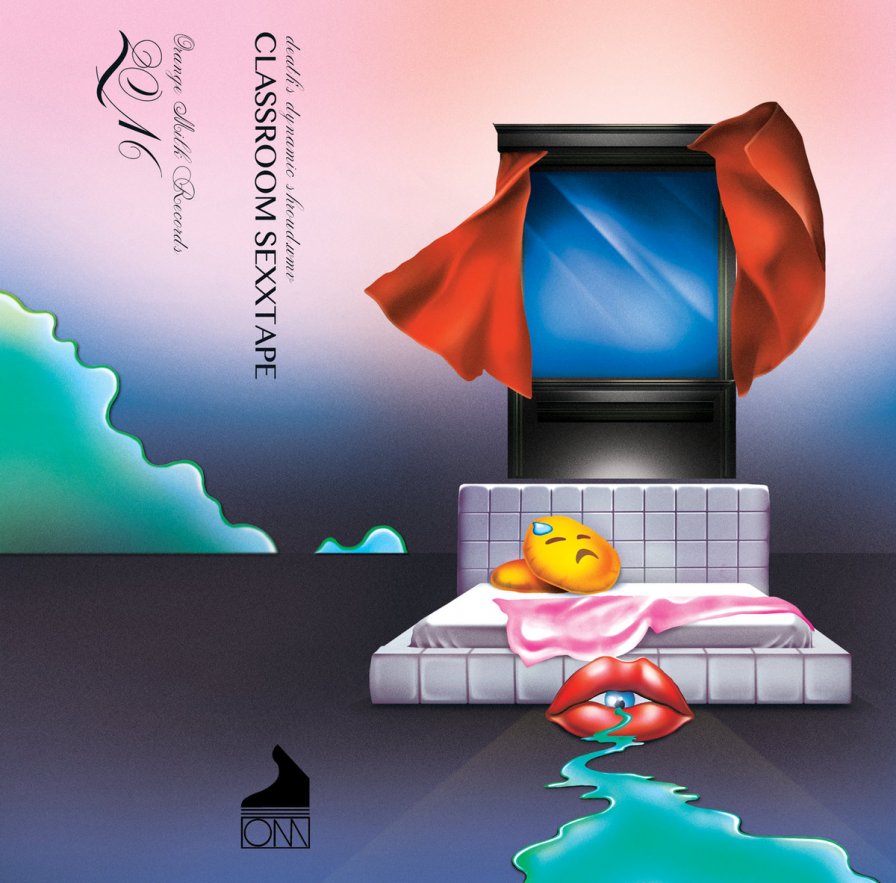
Without a doubt the year’s most inspiring infomercial, CLASSROOM SEXXTAPE slurped its way into our hearts and refused to leave until we were good n’ satisfied. We’ve come a long way from offhandedly tagging “-wave” onto the end of words to presume collective musical action (JK, no we haven’t), but this isn’t one for your “Best of Post-Vapor-Whatever” playlist. This one’s for lighting up to being lusty and lonely, for getting taught that special grind that’ll really make that special someone go aahajhfsdhf4h4hf4@89f##ssjppphhhh. In all seriousness, CLASSROOM SEXXTAPE is like Wendy Carlos’ Clockwork Orange for the isolation chamber age, funneling in the loops & bumps we need to reclaim heaven for all the abandoned wanderers of the sin-streaked datasphere. It’s fresher than ever, it’s dripping with sweat, it wants your body and can’t be contained. We’ve reached the final level, people; grip that gas pump and fuel it up till it pops.
33
Autechre
elseq 1–5
[Warp]

Autechre just keep going farther into the field. Apparently not content with doing whatever weird and beautiful yet cold, violent, and alienating thing they’d perfected on their last few releases, the legendary electronic duo of Rob Brown and Sean Booth have laid in front of us the bizarro tech buffet that is elseq, a four-hour-plus molecular assault on sense and essence that was as enticing as it was exhausting. While not all the stylistic forms on this record were brand new, never before have Autechre been so clear and so piercing in their approach, so enlightening just to listen to as deconstructionists and as careful, focused painters of sound. Tracks on elseq sometimes functioned on the barest mechanisms, the most utterly-reduced, lowest common denominators of expression — full synths reduced to pure transients, single sines as percussion, full scores bitcrushed to an abstract, wiry flow of bits — yet each piece kept its distinctive personality intact. Headhumping kicks and technical taps guided absurd constructions of metal and glitch into realms where a coherent melody seemed like a phenomenal accident yet was too clear and controlled to be so, as it suddenly grew and twisted with mischievous need. Gradually, the gap between sense and nonsense was utterly breached and inverted, but it retained a interconnected, kinetic, musical flow. It’s never been so clear before. The infodrop hits. The aftereffect is extraordinary and difficult to parse. I’m here to study, I guess.
32
Beyoncé
LEMONADE
[Parkwood/Columbia]

My love and I sat together, all our loaded baggage and folded limbs, in the cabin of the car on the concrete veins that would take us from Alabama to Louisiana, from the place near the mountains down to a city-kissed sea. We held hands and we argued, radio stations and routes. A truck-kicked pebble hit the windshield glass; the little sliver splinter would fracture further at the touch, we knew. We coasted crossroads near Waffle House and Exxon, where the fumes of grease and gas fueled our argument over routes that was about anything but which road we took, a splinter that would fracture further as we touched, we knew. We dropped hands and averted eyes and knew that the lips that we’d arrive with would look switched, sound changed. We hauled our selves up to a roadside stand that said LEMONADE, where a woman had cups in the sun and dust. We sipped and asked about roads, and just before the windshield broke, she shushed, sipped. “I’ll trade your broken wings for mine,” she said, and we repeated, a sound like the crunch of psalm, a gospel scream through fires, a way forward. “I’ve seen your scars and kissed your crime,” she said, and she was right, we knew.
31
Andy Stott
Too Many Voices
[Modern Love]

It’s Friday, December 9. This Too Many Voices blurb is due, and I’m already on my third round of back-and-forth edits regarding its content, which at one point hinged on unfunny jokes and self-deprecating remarks. I should be writing about Andy Stott, who is coming off his fourth or fifth consecutive release in a row that is absolute fire. But I’m having a hard time caring about anything, much less listening to music or writing about it. Perhaps I could’ve copy/pasted a list of terrible things that happened in 2016, people who died, election bullshit, unbelievable quotes or whatever. We want to pretend that life exists in this vacuum, where work continues regardless of the world outside of our offices. That those of us writing about this stuff can spin some golden words about how blah blah in our darkest hour blah blah we’ll shine out the clearer next go-round. But the shitty things in the world shape the lives of people who make this music. The world has seemingly decided to crush some of those people under its heel. At least for now. I don’t know how to write something helpful. I just want you to know how I feel: I am anxious and borderline suicidal. I am sad and resigned and withdrawn. I don’t know when it will end or if it even will. For now, I’m just going to listen to “Butterflies” again while I wait for 2017 to arrive.
30
Crying
Beyond the Fleeting Gales
[Run For Cover]

Beyond the Fleeting Gales wasn’t your average work of 80s revivalism. Save for the occasional translucent watercolor stroke of a synth pad or an angular stab of 16-bit bass, New York-based chiptune trio Crying eschewed nods to New Wave flamboyance or post-punk austerity, instead seeking inspiration from the decade’s decidedly less fashionable cultural constituents. Donning denim vests and aural mullets, the band crafted a shockingly satisfying spin on the hair-metal power ballad: a Game Boy Advance’s sound card’s shimmering chords splashed onto the shores of Reagan-era bombast, buzzsaw rhythm guitars and stadium-sized percussion forming a wall of high-octane optimism. At the intersection of “Don’t Stop Believin’” and “Judy and the Dream of Horses,” Crying acted as crossing guards, carefully guiding granular synth bloops, self-indulgent shredding, and faint slivers of Cap’n Jazz-era emo to safety. A new pair of earbuds hugged your noggin, their rubber tail billowing in the wind as you made a mad dash from one end of the crosswalk to the other.
29
David Bowie
★
[Columbia]

David Bowie died in January. Here we sit, rapidly approaching the end of this shit stain of a year, and that fact remains. David Bowie died in January. It didn’t feel real then, and it doesn’t feel real now. We lost a legend, which feels corny and melodramatic to say, but what other word is there? What other word can there be for a man who has produced some of the greatest songs of all-time, been a constant innovator, and yet managed to save one of his most complex, experimental, haunting, and yes, best acts for last? ★ would be a phenomenal achievement for any artist, let alone a 69-year-old cancer-stricken man’s 25th album. 25 albums deep and Bowie was still able to create something unlike anything he had ever done before: a jazz-infected, bible/World War I/self-referencing reflection on mortality, a confrontation with the specter of death. David Bowie is dead. But, in ★, in everything he has left behind, David Bowie cannot die.
28
Macula Dog
Why Do You Look Like Your Dog?
[Wharf Cat]
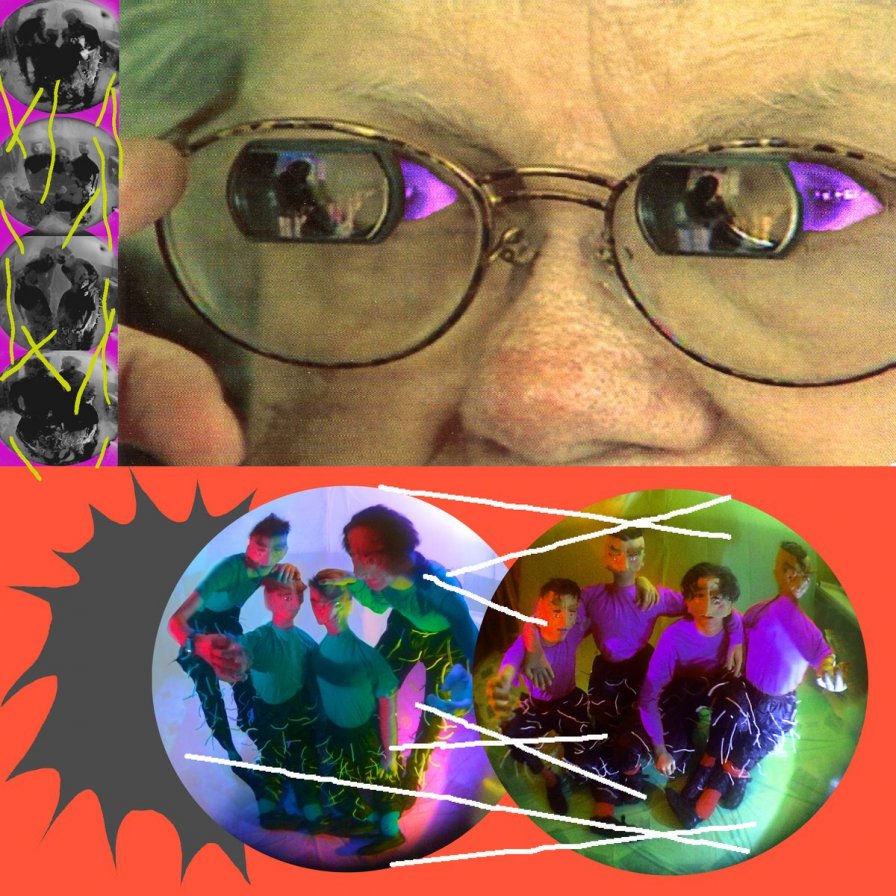
Macula Dog is a four-piece band, but the fact that two of the members are human-sized puppets perched atop the two human members’ shoulders is a revealing trick that the band employ beyond their live performances. Why Do You Look Like Your Dog? felt bigger than the sum of its parts, in part because of the aesthetic choices in the patches and instrumentation and the genuinely bonkers lyrics. Squelchy synths that gurgled across the definitely-not-programmed beats gave a frenetic, human energy to the electronic music in the same way that Macula Dog brought definitely-not-human puppets into their band and made them feel real, too. The result across the board was disconcerting in a carnival sideshow kind of way, which meant that you couldn’t help but be impressed, despite the reason and logic parts of your brain screaming out that something’s not adding up. Not only was Why Do You Look Like Your Dog? one of the most clever and unique albums of the year, but it was also straight up one of its best.
27
Tim Hecker
Love Streams
[4AD]

There’s no devaluing introspection, and we should all be grateful to Tim Hecker and his ambient cohorts for trafficking in a genre that characteristically delivers us into states of intoxicating inward-looking. The world we live in is necessarily interactive, however, and on that front, Love Streams was distinct generally and among Hecker’s discography as a whole for his self-described “interrogation of the voice.” Choral samples from 15th-century composer Josquin des Prez were manipulated and re-scored, and the resulting sheet music was then handed to Jóhann Jóhannsson, who helped (along with Ben Frost) in directing the Icelandic choir that ultimately sent our considerations extra as opposed to intra. The intermingling utterances arrived on “Music of the Air” battling an attempted noise overtake, and further down the waterway, the concluding “Black Phase” struck a magnificent note with its almost-Latin intonations, which reminded of Roman Catholic proclamations teeming with ideas about humanity’s place in the world. The human voice is the most affecting antidote to solipsism. Combining new instruments with old, Hecker told us that we aren’t alone, even if we occasionally relish our solitude.
26
Noname
Telefone
[Self-Released]
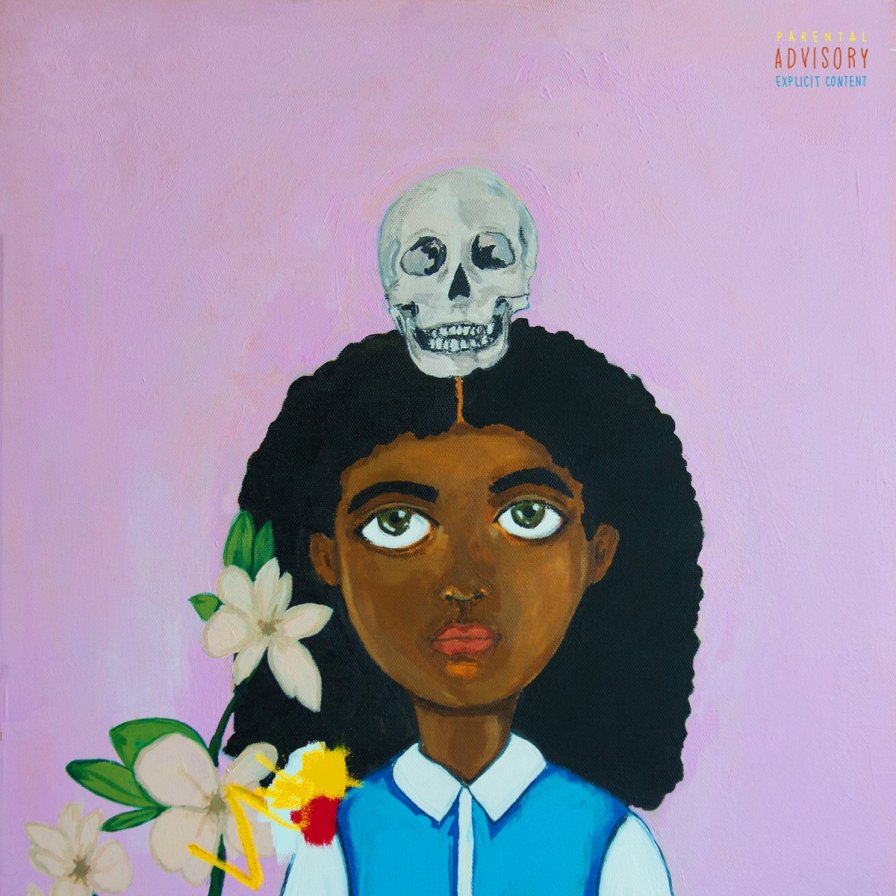
Telefone is the type of art that’s not only brilliant, but also brilliant in the way that it makes me question why we enjoy it. Not that you shouldn’t, but what is it that you think you’re hearing? Be honest with yourself. Do you hear anything confrontational here, or do you just like the colors? Do you feel happy-sad, but find in that feeling a sense of community? Of solidarity? Do you have imaginary friends? Do you tell them you have synesthesia, when really you just smoked Salvia a few times one summer? You’ll probably buy the next Noname album at Starbucks. You smile bright as day while she raps, “My granny gon’ turn up in her grave and say my granny really was a slave for this/ All your incompleted similes and pages ripped/ You know they whipped us niggas, how you afraid to rap it?” But is it because you fancy finding triumph in expressions of tragedy or because you really like these beats? Who are you?
25
Puce Mary
The Spiral
[Posh Isolation]

If the world felt too bright, a bit sunny, or vaguely pleasant this year, Puce Mary had any light buried alive. The Spiral, from lauded industrial noise artist Frederikke Hoffmeiers, was openly haunted through a simultaneous head-pounding course of capacity and claustrophobia. A bloodied handwritten note taped to a beat-up prized steer carcass being dumped out into a pit, The Spiral read as if the experience of death and despair never existed; instead, eternal discomfort lied at the bottom of that pit. A layer of grief bounded to the rising, unnerving sound that backed most of Hoffmeiers’ work — the brooding, death march drums; the squeals and shouts of the body. The Spiral was 2016’s most destructive eight-act theatrical work.
24
serpentwithfeet
blisters
[Tri Angle]

serpentwithfeet’s debut was sonic processing, cultural processing, and historic processing, the legacies of R&B, club music, gospel, sexuality, and marginal spirituality carefully, delicately, and wholeheartedly subjected to splitting, recombination, and modification. With assistance from The Haxan Cloak, productions split and bled as vocals toggled between timbres and affects and styles across stunningly unbroken melodic runs. Diverse samples bloomed into shrapnel in true post-club style, but that mutilated, recombinatory approach held just as true for songcraft as for sonics. An astonishing dedication to the careful interplay of vocal harmony and melodic lines, to songwriting on a micro- rather than macro-level, it became a truly queer vocal music, overflowing form and structure through an overwork and extreme focus that ruptured. Packing every corner of this imploded, miserablist, and at times disarmingly comic canvas with a second-to-second mastery of vocal form and tonal interplay, it was an empathetic overabundance of emotion, desire and pain springing from that voice, that shattered, explosive voice. A political project, an emotional bloodletting, an outpouring of chaotic, unfettered queerness backed by pummeling neoclassical drums and often moving into pure, unadulterated melodrama: it was rare that a portrayal of a disintegration, failure, and incomprehensibility could sound so sweetly specific, so lived-in and loved-in as blisters.
23
Solange
A Seat at the Table
[Saint/Columbia]

Solange held space, and we gathered. Everyone was invited. You and I were invited. And what an honor it was. Blessed for this intimacy, we needed it. Just like many of us needed to sit down and bear witness and learn how to listen. Solange held space for truth. What it means to be a black woman. How it feels. Not everyone can sing along or dance to A Seat at the Table. “They don’t understand/ What it means to me/ Where we chose to go/ Where we’ve been to know.” Solange made sure everyone saw black womanhood as sacred. The beauty and magic of her experience, yet at the same time, the sorrow and anger of it. “I slept it away, I sexed it away/ I read it away/ Away.” The world wants black women to be teachers, protesters, caretakers, everything. It weighs heavy, and Solange knows that comfort can be hard to find. And so she held space for history and community. “You’re a superstar/ You’re a superstar/ Always shining in the night/ And your skin glowing in the moonlight.” She held space for black women. She held space to seek joy and power, and to heal.
22
DJWWWW
Arigato
[Orange Milk]

I used to freak people out by telling them that the internet was a surrogate father of mine. I was being serious, though; it raised me up. Getting online at age 11, when the web was a primitive wild land of dial-up connections and text-based chatrooms, more deeply affected the way I turned out as an adult than my 17 years of formal education. Heck, I was downloading naked celeb JPGs long before Mr. Rodríguez talked to me about the birds and the bees. Of course, I love my dad and try to keep in touch with him. I’m very familiar with the emotional paresthesia of the scheduled call home; the precariously coherent rumble of a daily life too tedious to merit retelling mixed with a degree of affection familiarity made all but impossible to put into words. If I could call my “other” dad every Sunday afternoon, though, I’m sure our chats would sound a lot like DJWWWW’s Arigato. A telepathic link resembling 16 browser tabs open simultaneously, a hubbub of random stimuli making no actual sense but meaning that much to the two of us, bearing indeed the traces of technology bending reality into poignancy.
21
Princess Nokia
1992
[Self-Released]

More than the epitome of coolness for 2016, 1992 was the very notion’s battleground: an out-in-the-open exploration of what cool does and could mean. Call it hip or lit or “your personal brand” — there’s no escaping the fact that it’s the currency that much of the DIY world, for better or for worse, has come to embrace as a benchmark of quality. What was cool about 1992, then? Well, there were run-of-the-mill 90s references (from Mortal Kombat to drinking 40s), a delightful 2Pac impersonation, and Urban Outfitters-ready outfits in press photos. There were also cutting-edge, post-trap beats that breathed energy and languor into the tracks just the same. But all that was eclipsed by the kind of coolness that is increasingly hard to come by these days: that of a mission and personality unhampered by trend. Few things are more badass than an empowered Afro-Nuyorican “bruja” making body-positive messages the sole focus of her most successful single, rapping about skipping school to read comic books that feature non-sexualized, female superheroes, and asking women to come to the fore at her shows, pushing white guys like yours truly aside. It is the kind of coolness that can’t be bought, and if it won’t save us, I don’t know what will.
20
Jeremih
Late Nights: The Album
[Def Jam]

Sometimes it’s so late it starts to be early. Not so on Jeremih’s Late Nights. Here, the night is perpetual, and it’s always a balmy summer one, with the loose sense of sleepless, aimless wandering back to the apartment never dissipating. Sure, every single one of these songs banged like the middle of a party, shining so bright that no album I heard this year was more of a consistently unfurling pleasure shot to the center of the brain. But these songs were somehow better suited to that liminal moment of coming up from the basement club to the hush of cars pursing rainwater on the street. There was an expectant neon buzz to how the melodies dripped over back beat infrastructure. It was buffeted by an excess of possibility for the next stop on the endless night out and heliumed to burst with Jeremih’s oozing coo. Have you ever read The World is Yours, on a blimp?
19
Elysia Crampton
Elysia Crampton Presents: Demon City
[Break World]

In the first installment of a two-part DJ dialogue, Elysia Crampton invoked the spark and grit of her neo-futurist co-practitioners to produce an album that covered a sinister, haunted, and unreservedly comical landscape. The premise surrounding Demon City coiled and spilled across stylistic juxtapositions (cumbia, special effects, hip-hop) in the throws of a story that punctuated the abject horrors of colonialism. Dedicated to Elysia’s grandmother and to Total Freedom, imagined from the perspective of Bartolina Sisa’s severed limbs, and assembled between L.A., La Paz, Texas, Virginia, Copenhagen, London, and Berlin, Demon City pulled on so many different strands that the fabric of its sonic tapestry had every potential to fold under sheer complexity. But as Chris Kissel pointed out, “Crampton’s work adopts its own distinct language,” which in this case allowed for an exquisite album to tell a complex story within a refined and majestic framework — the ultimate soundtrack to the darkest hour.
18
Kero Kero Bonito
Bonito Generation
[Double Denim]

Once, a friend of mine, slinging a bag bearing the image of Kumamon over her shoulder and brandishing an umbrella that once opened revealed a constellation of Doraemon in various poses, explained to me the concept of kawaii. “All of our lives here in Tokyo are so stressful that the only way to deal with it is obsessing over something cute.” It’s this notion of obsession, of submerging yourself in appealing and non-confrontational imagery, that gives kawaii its dark core of escapism. It’s a magic wand to airbrush out our woes. As Ben Levinson’s wonderful analysis demonstrates, Kero Kero Bonito’s great success was harnessing this implicit dimension of cuteness and weaponizing it, giving it an acerbic edge. Like much of PC Music’s exponentiated club (KKB’s Gus is also TMT darling Kane West), Bonito Generation’s intensification of J-pop tropes and disrupted expectations revealed these smooth sonics to be riven with complication. Hidden beneath the konpeito production were subtle moments of imperfection: dropped rhymes, deformed voices, dead ends. Even Sarah Bonito’s narratives belied a posture of dropping out on societal expectations (sleeping in, joining a band, “not want[ing] to do anything”). It had nearly all of the machinic harmony of J-pop, nearly all of the saccharine appeal of the adorable, but it was made for slackers and jokesters. And all the more kawaii for it.
17
Dedekind Cut
$uccessor
[NON WORLDWIDE/Hospital]
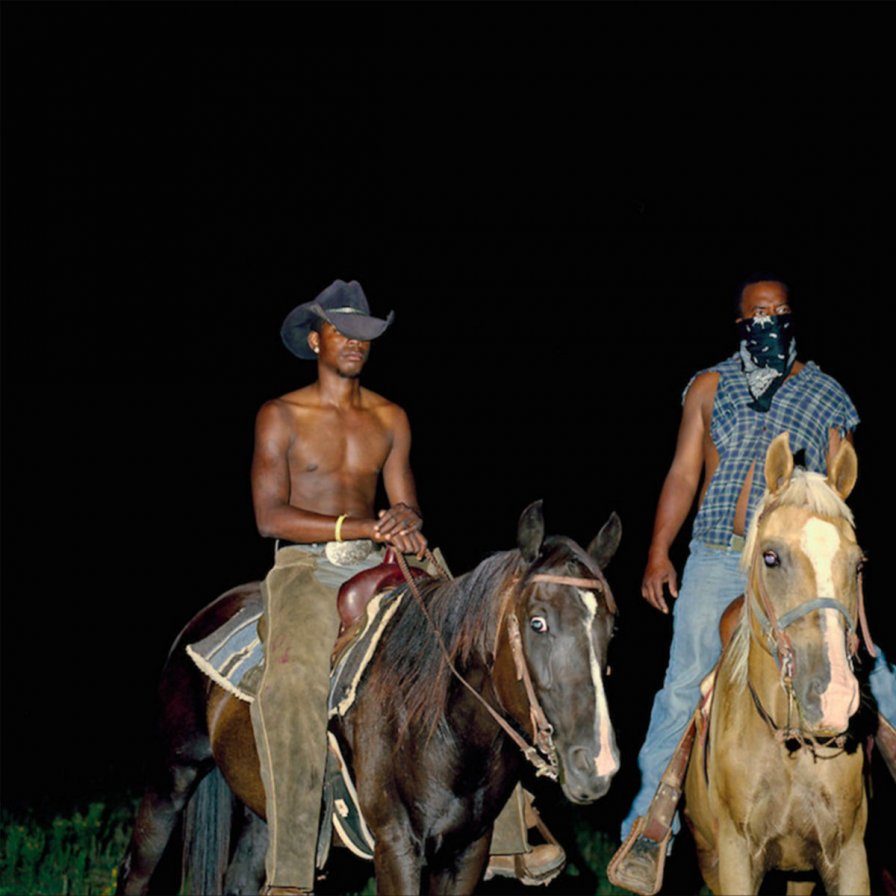
$uccessor created a densely ethereal world that should have put Fred Warmsley a.k.a. Dedekind Cut f.k.a. Lee Bannon in the same conversation as artists like Arca, Daniel Lopatin, and James Ferraro. Yet perhaps because of its late release date, its underlying politics re: blackness, or Warmsley’s tweets emphasizing its grotesque elements, it flew comparatively under the plunderphonics radar. That’s too bad, because $uccessor constituted 2016’s best Ayahuasca journey for anyone without the guts or the $1k necessary for the real thing. The grotesque was only part of the story: in $uccessor’s world, being was extant, but time was immaterial. Sounds lurched in and out of frame, leaving beautiful vapor trails that slowly disintegrated. Conversations with angels were implied in space as much as they were legitimately heard, the boundary between what occurred and what could have occurred fading to black. Plus, you know, that fucking flute in “Integra.” Post-$uccessor, it’s hard to shake the feeling of floating in a post-death eternity or of never having been born in the first place. Yet, somehow, we emerge from “46:50,” $uccessor’s closer and truest moment of transcendence, reinvigorated and alive as ever.
16
Foodman
Ez Minzoku
[Orange Milk]

On his second album proper, Takahide Higuchi peeled back the Saran Wrap from a forgotten leg of footwork and found a striking collection of bizarre and colorful excrescences amongst the clattering bones. The arrhythmic and atonal “Bebey” started things off: Taigen Kawabe’s theatrical, half-whispered confidences likely established a context for Japanese speakers, but no subtitles dammit. From there: “Uoxtu” was a Punch and Judy show; “Nagaremasu,” 22nd-century Nino Rota clown music; “Dddance,” belly dancing with farts; and so forth. Higuchi’s violent assemblages of textures and tones did their best to resist becoming music and sometimes failed. There were chopped-and-stretched voices and screams that traced their lineage back through the Boredoms to Yoko Ono, but mostly the soundscape gleamed and glinted with glossy surfaces and sharp splices. In the back half, Foodman clicked on blues and ochres with his Photoshop color picker; English words like “love you” (Minzoku) and “ow” (Yami Nabe) popped up amongst the minor keys. He wrapped things up abruptly with “Rock,” a brief adventure in cute, a ringtone that neutered and parodied the genre. Foodman rigidly disavowed the entire jazz-blues-rock tradition, inventing and exploring a totally unique, jagged para-pop candyland.
15
Jessy Lanza
Oh No
[Hyperdub]

After 2014’s Pull My Hair Back and a few releases throughout 2015, I don’t think anyone was really prepared for the sort of enormous pop explosion that Jessy Lanza would find with Oh No. With 10 tracks of blown-out R&B, modular techno, and 80s synthpop balladry, the album took Lanza’s strong, seductive lines to new heights in collaboration with Junior Boys’ Jeremy Greenspan, as well as DJ Spinn and Taso. The tracks jumped from the giddy footwork of Chicago to the sunset euphoria of Los Angeles, Madonna-style, with an electric dexterity that radiated in a million new directions all her own. Sure, tracks like “Never Enough” and “Going Somewhere” felt deeply indebted to the rippling bass and squelched synths of the Kraftwerk-inspired Yellow Magic Orchestra, and sure, the evocative lyrics of “Vivica” could easily match anything to come from Aaliyah or Destiny’s Child, but the overall effect of the album was a rapturous hybrid of synth-drenched profundity that, even years after this sort of retromanic synthesis hit its stride, still found something inspiring in pastiche.
14
Rihanna
ANTI
[Roc Nation/Westbury Road]

Maybe it’s nonsense to call one of the most famous singers of all time underappreciated, but here we are: in a year flooded with bar-raising R&B albums, Rihanna’s ANTI was possibly the least appreciated for what it brought to the table. Often chillingly skeletal, at other times wildly overheated (see: those awesome Prince-worshipping lead lines on “Kiss It Better”), Rihanna was all over the map here, and in this roaming, she grabbed more room to experiment and invent than ever before. The result is her first great album, a messy, intense, strange, murky, imperfect, brilliant record that, like a millennial pop Kid A, dismantled its own genre while remaining stadium-size accessible. Hazy and full of detours, this was the document of a hugely visible artist wrestling with her own voice and carving out enough space within it to reassert her identity. Like a 3 AM call from that one friend who hasn’t been around for a while but always knows where the real trouble is, ANTI lingered behind as a memorable, intimate journey to the end of the night (Tame Impala karaoke included).
13
Young Thug
JEFFERY
[300 Entertainment/Atlantic]
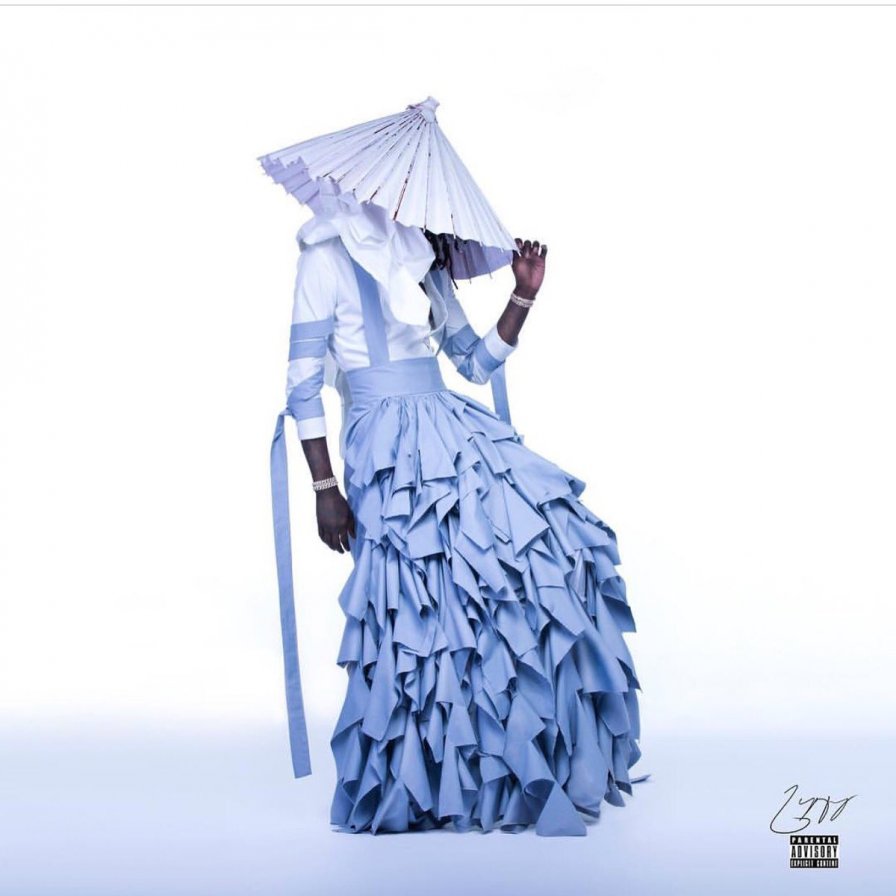
Young Thug’s entire career has been defined by the almost unwitting synthesis of generic conventions, but JEFFERY in particular was rap fusion that tied together in a neat little bow the spritely, controlled energy of the year’s best pop with the volatile spontaneity that comes from the overconfidence of knowing you can pretty much do no wrong. Thugger’s ad-libbed melodics hit unreal new heights with every indefinite hook, digging into the very fabric of modern rap and extracting the unseen potential out of every random trap loop. The fact that so much of JEFFERY is still straight-up mystifying and completely alien to mainstream pop regulation should be evidence enough of Young Thug’s singular stature within popular music. What magic led to the fluid dynamics of the “Kanye West” hook, for example? What in his anatomy allowed him to reach in and pull out the serpentine howling of “Harambe?” Where does one trace the stroke of genius that is the “Work” flip in “RiRi?” ‘Cause it sure seems like this shit just rolled off his tongue.
12
Lil Yachty
Lil Boat
[Self-Released]

Joy to the World! While we were seafoaming at the mouth and drowning in our sorrows, Lil Yachty channeled an unlikely positivity, the warmth of summer songs, into resoundingly amateur resilience. Released when its maker was 18 years old, Lil Boat defied the novelty that has been assigned to Yachty for his goofy image and nursery rhyme hooks. From interludes to outbursts, at the overlapping shores of Atlanta trap and radio pop, Lil Boat tuned his infectiously carefree coo to TheGoodPerry’s icy beats with free-associative soul. We rode the wave of its plastic jubilation (“Run Running,” “Minnesota”), woozy calms (“Never Switch Up,” “Im Sorry”), and crystalline jams (“One Night,” “Wanna Be Us”), all of it immaculately sequenced into a strange voyage of breathing room. Although much of its pleasure was immediate, even shallow, Lil Boat drifted over deep water. Aboard, there was tranquility in his elasticity, a smile that wouldn’t capsize.
11
Yves Tumor
Serpent Music
[PAN]
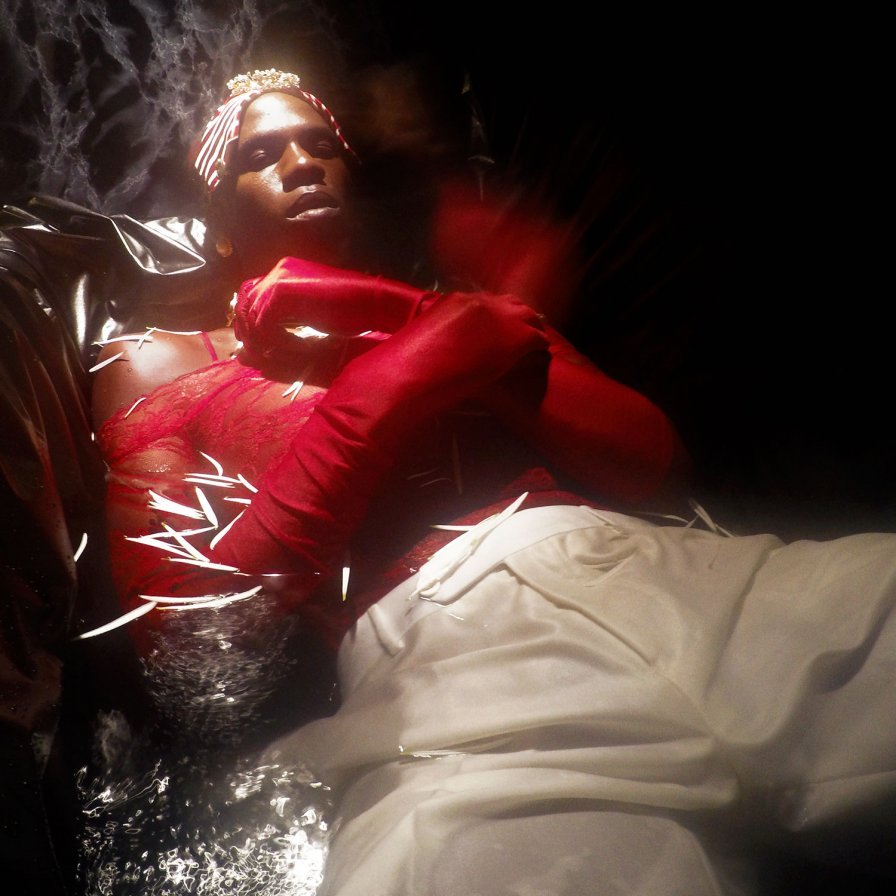
The broken AM radio-chillwave “Devout” is like a cruel wink to Teams fans, because Serpent Music is no OneWorld 開発. It would be wrong to say that Sean Bowie has come out of the darkness just because he appears embedded in ripples of liquid, silk, lace, light and glare on the cover of his new record and was caught candidly at rest in his captain’s quarters on the paper sleeve within. Because Yves Tumor is a mask and a void. His ship is going somewhere we haven’t. Like “The Feeling When You Walk Away,” it’s a clumsy wish whispered through teeth clenched. Bowie’s singing now and yelling STOP! while cracking a whip on “Dajjal.” “Role in Creation” might be a hot forgotten Dxys Xff cut sent through a high-pass, but the two “Serpent” tracks are a beating, beeping, yelling, and creeping nightmare. Really cuts the vibe. Between the high-strung hip-hop of “Broke In (ft. Oxhy)” and “Face of a Demon” and the glimmering atmospheres of “Spirit in Prison” and “Perdition,” Serpent Music wryly circumnavigated the spirit of a year wrapped up in surfaces. It was the smart and sinister culmination of Bowie’s bright career.
10
Elysia Crampton
Dissolution of The Sovereign: A Time Slide… (Or: A Non-Abled Offender’s Exercise in Jurisprudence)
[Self-Released]

It’s 2016. “Amidst the cataclysmic, irreducible horizon of coloniality,” a music throbs from dungeons within the Castle of Terror, surrounded by lines of fire. Agitated, drawn, accumulated — mucosal monsters assemble in full acceleration. Glowing. Exothermic. Mutagenic. Spitting dust. Silenced. An image of unnatural teratologies dissolved in blood. A vanishing point. Zombies without organs. Tendons peel from rock. Trash. On the floor. Hacked body. No body. Demon City. Becoming monster. Inhuman ecstasy. Spill carnival. Prophetess the Hutt. Drifting into the psyclonic storm drain. A multi-appendaged medical droid. A stickybeak drum player. Emperor protein in the criticality swarm. Then, agreement. A-human tenderness. Oh gracious parasite. Oh cracked wheel of life. Oh wind of death. Oh flayed fish. Oh corn chip. Oh compressor. Dumb weight. Calcified. Deaf stone. The music makes the wind sing, the hurricane a chord, as Andean castles with a thousand towers arrive from thin air, flags flying. Dissolved and deviated, Elysia writes the future <3.
09
Danny Brown
Atrocity Exhibition
[Warp]
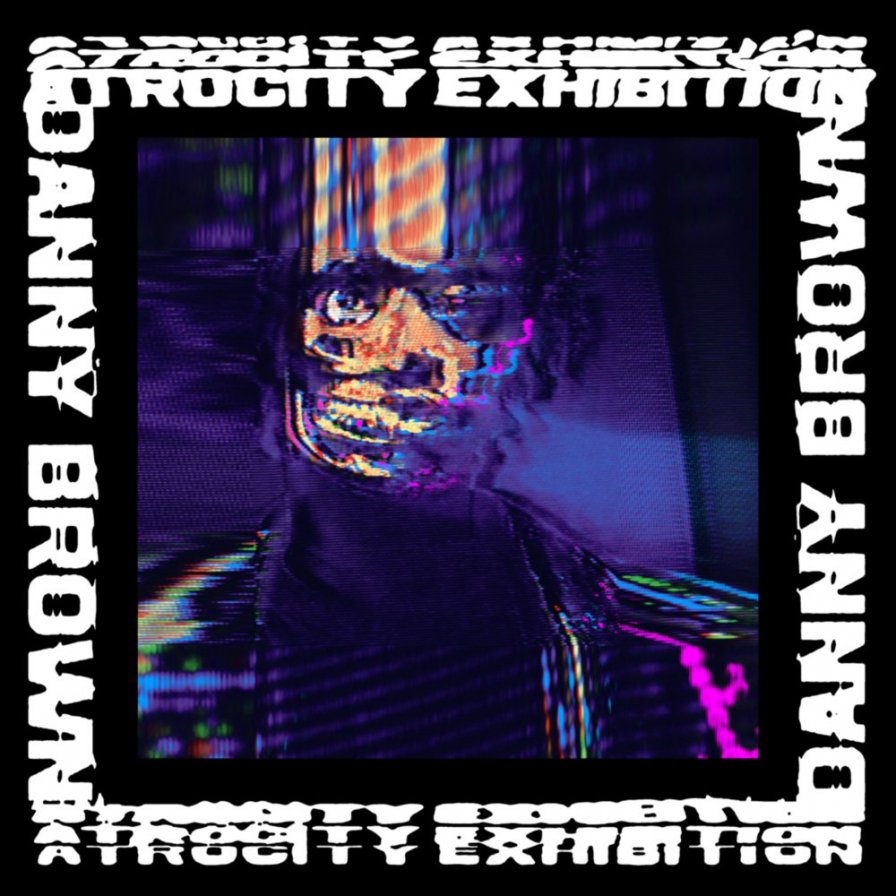
Danny Brown has always peddled in frothing-at-the-mouth, pharmopsychological debauchery, but where XXX foregrounded the spectacle of his imminent death, what he offered here was something a little beyond that: a life in bodies rendered thinged. Like both of the record’s eponymous predecessors, Ballard and Curtis, Atrocity Exhibition seemed to function as anti-pornography via pornography. It was a document of passion’s divestment in human relations, reducing the inscrutable euphoria of presence into senseless libidinal circulation — the kinetic hollow of an abandoned carnival left running. The psychic and physical are numbed to feeling, but remain bound to desire; there is neither plaisir nor joiussance. Brown’s approach was a nakedness that implicated us in scopophilic perversion. But it was precisely our conjoined psychic deformity that provided the record’s resuscitative turn. Amid these tumbling fragments of twisted, manic production, he attempted to magnify and explode his condition and return some warmth to his frostbit psyche. Ballard said of humanity’s predilection for violence and obscenity, “We may have to go through this phase to reach something on the other side,” and that was the real work of Atrocity Exhibition: to push even further beyond and discover at the terminus, no matter how monstrous the ordeal or destination, anything other than this.
08
Charli XCX
Vroom Vroom [EP]
[Vroom Vroom]

A shimmering Ferrari with XCX branded on the hood, Vroom Vroom was the ultimate playpen for the rich, famous, taut-bodied, all-access crowd, its perfectly-tuned mechanic parts inextricable from its feminized chrome surface — “cute, sexy, and my ride’s sporty” as a manifesto. It was SOPHIE’s purring motor of maximalist industrial-cum-Europop productions entangling Charli’s haughty, filthy-poised kiss-offs and come-ons, a ceaseless flux of vocal affect and production, as “cute, sexy, and sporty” a ride as Charli promised. It was perfectly precision-engineered pop replete with some of the most gloriously gleaming whooshes and squeals, crests and choruses. It was a space where that unfettered access to sensation and power granted to society’s elite was torn open through sonic fragmentation, a messy, inchoate mass of bodies rushing in. A hyper-cliché, hyper-capitalized image of “girl power,” it wasn’t irony, just a set of sensual experiences unleashed from their cultural roots via torrid sonics, the material specificities of sports cars, and bass drops and body drops and synth blocks jubilantly torqued into raw affect. Giddy, sweaty, overpowering, bratty — we became part of its mechanic flow and found access to a torrent of potentialities within semiotic hell. “We’re in paradise,” Hannah Diamond added in her ultra-sweet guest spot, and she was right: a paradise built in hell. Pure sensation, marketable femininity weaponized but locked in, a staging ground for a million genderfucked makeouts, the glory of bodies squishing together amongst the raw joy ripped from amidst a crush of over-significations.
07
James Ferraro
Human Story 3
[Self-Released]

Ferraro divined prophetic messages that materialized in the chemtrail foam of his cappuccino. He lied prostrate before a column of neatly stacked Consumer Report magazines, their statistical evaluations of breakfast cereals annotated with fluorescent-pink Post-Its and Sharpie scrawl. His eyes watered at the resonant yawn of a slap bass. Swaddled in the omnipresence of Big Data, our hero reveled in contradiction: embracing the vibrant monochromacy of technological jargon, he sought to accelerate the growth of Apple Store aesthetics to unsustainable levels, thus triggering the violent heat death of macchiato minimalism. From the rubble of this post-internet collapse arose a society governed by self-aware sincerity, a mindset that usurped the tyrannical reign of scientific rhetoric as Dominant Discourse, replacing it with a triumvirate of intentionally blind optimism, spirituality, and post-human transcendence. Human Story 3 was a MIDI hymnal mailed via drone to each citizen of this global civilization. Ferraro’s globalist-realist arrangements were unabashedly ambitious, towering structures built upon cozy clarinet melodies and unbridled ideology. No more Helvetica. No more Scandinavian, minimalist corporate logos.
HUMAN STORY // CHAPTER 3: MAXIMALISM
06
Jenny Hval
Blood Bitch
[Sacred Bones]
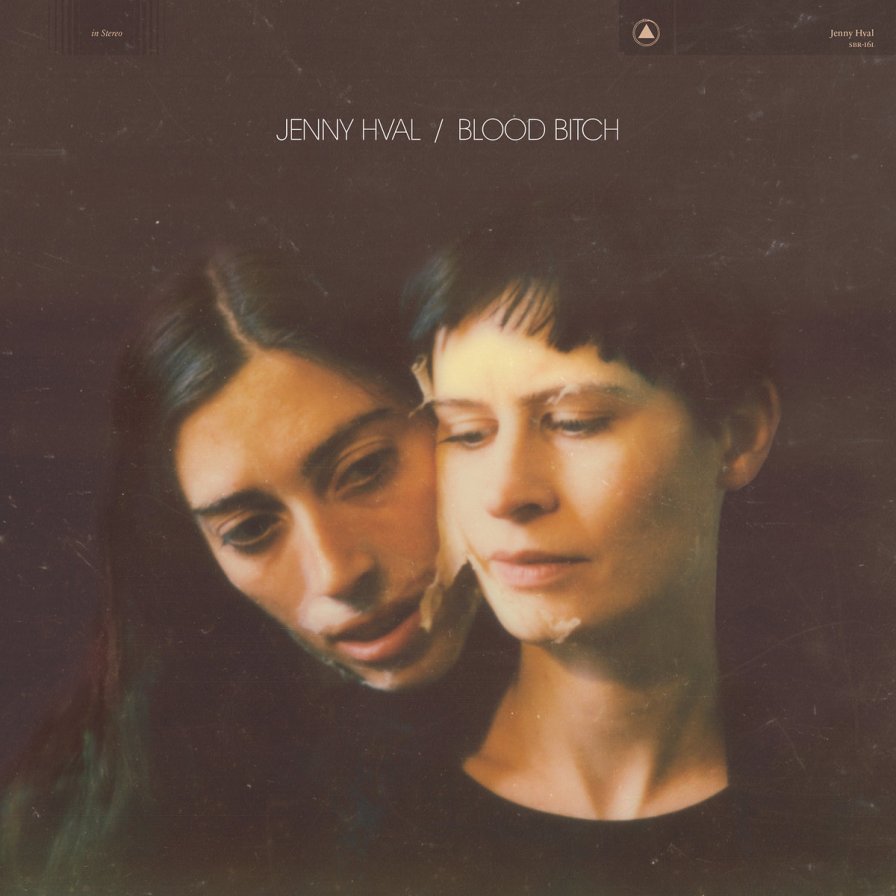
Last summer, the “trend forecasters” at K-Hole noted that, in the utter collapse of their optimism for the aesthetic “sameness” then known as “normcore,” something new was bubbling beneath the surface. A form of technocratic autonomy that would soon sublimate the totalizing narratives of our times, Chaos Magic was an impulse built on the “temporary and subjective” coping mechanisms essential to the aesthetic survival of the last few years. Steeped in the sort of self-affirming mantras that make everyone their own guru, Chaos Magic was the Fairy Godmother, The Secret to guide self-motivation away from its faith in generational sameness and toward some blissed-out, subjective divinity. Now, maybe this jagged fragmentation, this bull-headed faith in conspicuous obsolesce, is the same feeling guiding certain “post-truth” narratives in the global media. Maybe it’s the reason there are about three smoky crystal shop windows lining my block in Brooklyn, all with aura photography readers and the sort of pop-up Tarot card tabletops that reek of pot and mate. But beneath it all, something about the gesture reminds me of Jenny Hval’s Blood Bitch. The album’s caustic slice through gendered difference divulged a willful romance, an “erotic self-oscillation” that not only departed from the phallogocentric gaze of narrative, but did so with its own stunning euphoria. From the bloody, witchy hysteria of its own history, Blood Bitch was “tired of subjectivity,” yet thrust forward in generative loss and narrative absence. A soft and shapeless “conceptual romance,” Blood Bitch built a world all its own, every bit as striking and as magical as its forbearers.
05
Frank Ocean
Blonde/Endless
[Boys Don’t Cry/Def Jam]

There was a stillness, an intimacy lying at the heart of Blonde and Endless. These songs drifted, across sounds (“Commes Des Garcons’” slanted hip-hop; “Ivy’s” dreamy indie rock; “Solo’s” organ-drenched confessional) and across places (Akron, New Orleans, Texas), snapping to attention (“Pink + White”) and diffusing (“Pretty Sweet”). Frank Ocean found himself at the center of this drift, looking for his place in the world, reaching out to his elders (his “mother” on “Be Yourself,” Andre 3000 on “Solo (Reprise)”), working across mediums (ambience, the visual, found sound), forever orbiting, searching, questioning. A streak of melancholy pervaded these works, emerging in the grain of Frank’s voice, in the skeletal beats that fizz across the album’s surfaces, in the seemingly vast distances separating the figures in Endless. But this melancholy, this absence, was productive; it created moments of bloom, of beauty, of pathos. It was in these minor moments that the album soared, dazzling with the rawness of its affect: that Trayvon line on “Nikes,” the stress on “anything” at the end of “Siegfried” (“I’d do anything for you/ In the dark”), the delicacy of lyric and delivery in “White Ferrari’s” last verse. Perhaps more than any other contemporary songwriter, Frank Ocean understood the sadness at the heart of experience and the necessity to communicate it, to realize how it brings us together. On these albums, Frank Ocean stretched his hands, binding himself to us in all of his/our precarity and strength. As one of 2016’s lost poets once said: “There is a crack in everything; that’s how the light gets in.”
04
Arca
Entrañas
[Self-Released]

Acra’s enormous sounds in Entrañas haven’t been this tightly bound since &&&&&. Simply put: it was a portrayal of your daily timeline, the mundane effects that you love or find redundant, an aspiritual reminder of self, getting lost in thought or en route. Acra examined the x-rays of life gutted in sounds familiar, distant, and slimed, leaving Entrañas stubbornly persistent and exquisitely haunted. It clawed at your face while falling in love with the acceptance of destiny in terms of being one in seven billion. It was Arca leaning against a twisted statue only Jesse Kanda could construct, musing complexity in the ears of fate. Entrañas was your asshole nailed to the rocks above, while you fall off a cliffside inverting your digestive system — rectum, intestines, gallbladder, stomach, liver, esophagus — only to snap back internally by the throat *a final gasp* swinging you steady above salt water, burning your eyes gazing into the end, thinking “It was different this time around.”
03
Kanye West
The Life Of Pablo
[GOOD/Def Jam]

At long last, Ye has returned home. For all the talk this year about “the old Kanye” versus “the new Kanye,” among all the misinterpreted political speeches and refunded concerts, everyone seemed to forget that The Life Of Pablo was the most humble Yeezy has sounded in years, frayed ends and all. Like in his album covers, whose stark reds have gradually given way to the same beautifully brown and amber tones of his debut, TLOP saw Kanye confronting the gospel and holy spirit of his beginnings from the other side of the glass. Where My Beautiful Dark Twisted Fantasy and Yeezus were all fire and damnation, The Life Of Pablo was a willfully imperfect offering of acceptance and forgiveness. Not that it kept Kanye from delivering the juice — there was still plenty for the masses to get riled about, from the reignited Taylor beef to the willfully petty shots at Ray J and Amber Rose. But in these flaws lie the true revelation of Pablo; that there is no final state of rest in this world, no ultimate end to redemption. Our absolution is ongoing, faithful as the waves, and no matter how far we’ve wandered from grace in the search for fulfillment, it’s never too late to add on an extra track or two.
02
Lolina
Live in Paris
[Self-Released]

Paris 2016: scenes from the apocalypse, everything’s gone to hell, Rihanna in concert, thousands of troops on the street. A year-long state of emergency. A static war machine turned upon itself — shouts to London and New York. Paris 2016: just another crater, a fenced-off crash site, ticket-only, merch stands everywhere, dark rooms on silent, no flash. Monopoly animations projected onto a screen, gnomic screeds recited in clipped English, Xeroxed slogans from gutter-damp Occupy zines: roll the die, take a chance, you’re a liar, aim higher. You’re super rich or you’re nothing (let’s face it, you’re nothing). Scattered expenditure and rudimentary dreams of future comfort, all broken song structures and big hall reverb. Live In Paris was a timely “performance,” forever fixed in the shadow of Brexit and Trump, an immigrant howling BULLSHIT at the nostrums of the neoliberal consensus. And yet it doesn’t belong to our time inasmuch as our time belongs to it: framing it, distorting it, tilting its allusive disorder toward something like cohesion.
01
Babyfather
BBF Hosted by DJ Escrow
[Hyperdub]

“You hear the sirens, yeah? The sirens is a real ting. Man hear the sirens every fucking night. Man’s tryna do my ting, and I hear the fucking sirens.”
– DJ Escrow, “Stealth”
There are many ways to think about the works of Dean Blunt, and most of them are probably wrong. Yet it’s not right to say that Babyfather’s BBF Hosted by DJ Escrow resists interpretation; such a turn defensively — nah, aggressively — presupposes an antagonistic relationship to audience. But there is undeniably a waxing and waning proximity of relations between the referential and gestural eyelets that materialize in the Blunt matrix; and, by proxy, there is a constant recalibration with regard to audience. Remember how we (non-Russians) were never even supposed to hear Stone Island? Blunt’s sonics are strategies as much as they art. Non-allegorical strategies for real living.
And so while BBF’s environs were harsh, hostile, toxic, Blunt enunciated, calm: “Don’t panic.” Quintessentially himself, he explained nothing. The very much not-unreal DJ Escrow, by contrast, explained everything, in iterative arcs imploring realness, kernels of positive embodiment in an inwardly weaponized soundscape. His album-spanning libretto was all motivation, empowerment, unity, and therapy. In un-relief amidst BBF’s lack of foreground or background, it was the way things really were. It is the way things really are.
“Don’t panic.” We woke up on the 4th day of 2016 to another one: the sound of dissociative gas flooding a metal chamber. The harsh undeniability of what gets known during the comedown. Granular jet engine noise, the sirens, dead fashion designers, betrayal, 20 bands: things you can’t ignore. “Get these white girls out of my home.” We were shook. It was a jarring real thing, a pressurized slab of being.
Babyfather didn’t offer a condolence or eulogy, commentary or satire; it didn’t evoke or hold a mirror to the world. BBF was reality emerging at the inchoate contours of this world, at the limits of a body: “What you gonna do when life gets long?” Another one: a compressed constellation of prismatic contexts, rigged with security systems and alarms, embedded surveillance channels, and obfuscated references saluting one another and chatting shit, in teeming awareness of an infiltration threat. Still, true strength emerged with the refusal of dichotomy or dialectic. Babyfather sprayed bars of knowledge, less as a separate awareness, more as part of a substance.
As our fearless leader Mr P posed in his exhaustive review of BBF, maybe we were the aggressors when we suggested, on forums and in reviews, that Blunt was trolling us with his bodyguards, his conspicuous absence, his supposed “enigmatic” quality. We’d stumbled into his codified, platinum-gilded matrix of thought and lashed out, anxious and overwrought, that we were trapped in the grid, that the landscape was untenable, the sirens too shrill. Again: “Don’t panic.” BBF was not an exercise simulating the outer limits of hypernormalization. It was 2016 en plein air, unadorned. This is really how it is.
Favorite 50 Music Releases of 2016
50. N-Prolenta - A Love Story…
49. Sean McCann - Music for Public Ensemble
48. Ka - Honor Killed the Samurai
47. Amnesia Scanner - AS [EP]
46. Angel Olsen - MY WOMAN
45. Oren Ambarchi - Hubris
44. Huerco S. - For Those Of You Who Have Never (And Also Those Who Have)
43. Mitski - Puberty 2
42. DJ Coquelin & MC Cloarec - JE M’EN TAPE
41. ANOHNI - HOPELESSNESS
40. Klein - ONLY
39. Julianna Barwick - Will
38. Ytamo - MI WO
37. The Savage Young Taterbug - Shadow of Marlboro Man
36. Future - EVOL
35. The Caretaker - Everywhere at the end of time
34. death’s dynamic shroud.wmv - CLASSROOM SEXXTAPE
33. Autechre - elseq 1–5
32. Beyoncé - LEMONADE
31. Andy Stott - Too Many Voices
30. Crying - Beyond the Fleeting Gales
29. David Bowie - ★
28. Macula Dog - Why Do You Look Like Your Dog?
27. Tim Hecker - Love Streams
26. Noname - Telefone
25. Puce Mary - The Spiral
24. serpentwithfeet - blisters
23. Solange - A Seat at the Table
22. DJWWWW - Arigato
21. Princess Nokia - 1992
20. Jeremih - Late Nights: The Album
19. Elysia Crampton - Elysia Crampton Presents: Demon City
18. Kero Kero Bonito - Bonito Generation
17. Dedekind Cut - $uccessor
16. Foodman - Ez Minzoku
15. Jessy Lanza - Oh No
14. Rihanna - ANTI
13. Young Thug - JEFFERY
12. Lil Yachty - Lil Boat
11. Yves Tumor - Serpent Music
10. Elysia Crampton - Dissolution of The Sovereign: A Time Slide…
09. Danny Brown - Atrocity Exhibition
08. Charli XCX - Vroom Vroom [EP]
07. James Ferraro - Human Story 3
06. Jenny Hval - Blood Bitch
05. Frank Ocean - Blonde/Endless
04. Arca - Entrañas
03. Kanye West - The Life Of Pablo
02. Lolina - Live in Paris
01. Babyfather - BBF Hosted by DJ Escrow
More about: Amnesia Scanner, Andy Stott, Anohni, Arca, Autechre, Beyoncé, Charli XCX, crying, Danny Brown, David Bowie, Dean Blunt, Dedekind Cut, djwwww, Elysia Crampton, Frank Ocean, Future, James Ferraro, Jenny Hval, Jeremih, Julianna Barwick, KA, Kanye West, Kero Kero Bonito, Klein, Macula Dog, Mitski, N-Prolenta, Noname, Oren Ambarchi, Princess Nokia, Puce Mary, Rihanna, Sean McCann, serpentwithfeet, Solange, The Caretaker, The Savage Young Taterbug, Tim Hecker, Young Thug, Yves Tumor
We celebrate the end of the year the only way we know how: through lists, essays, and mixes. Join us as we explore the music that helped define the year. More from this series



